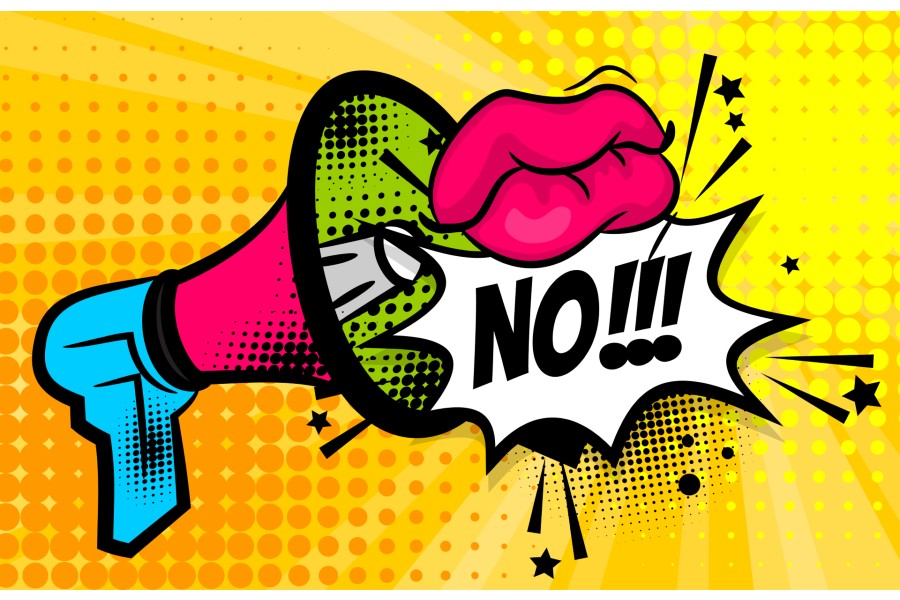Pay close attention to Stephanie’s story:
“Roger’s feet get cold easily, so I bought him a pair of sheepskin slippers. He loved them, but it wasn’t long before the wool lining started wearing off. So I called Lands’ End to see if I could get them replaced under warranty. The lady I talked to was very nice, but she couldn’t find any record of my purchase, and she couldn’t figure out which slippers I was describing. But, she cheerfully told me that she’d be happy to exchange them, and gave me a return authorization. I was pretty excited when I told Roger that Lands’ End had agreed to replace his slippers even though I couldn’t find the sales receipt. He told me that was because I bought those slippers from LL Bean.”
Stephanie tells her story well. People laugh at it. It’s the kind of story that people tell each other daily. It’s the kind of story likely to be repeated by people who don’t know either Stephanie or Roger.
There’s a critical lesson, though, in Stephanie’s story. Did you catch it? No problem. We’ll come back to it in a minute.
Stephanie’s story is an example of Word-of-Mouth.
It’s not, however, an example of Word-of-Mouth “marketing.”
And apologies to WOMMA aside, I’m not convinced that Word-of-Mouth marketing exists.
Why? Because adding the word “marketing” assumes that it’s something the business causes to happen. Word-of-Mouth may be influenced by business, but by its very nature it can never be controlled.
Go back to Stephanie’s story for the critical distinction. Is she telling a story about customer service at Lands’ End? No. She’s telling a story about her own experience as a customer. People love to tell stories about themselves.
Exactly how important is your product or your service in the telling of any customer’s story? If the stuff you’re selling fits into her narration, it might be included. But whether it is or not, Word-of-Mouth in any of its forms is always about the experience of the buyer. Only indirectly is the seller even involved.
Which makes Word-of-Mouth “marketing” a misnomer.
Word-of-Mouth is not marketing for several reasons.
Marketing becomes cost-effective when there are efficiencies of scale. Word-of-Mouth takes place on a one-to-one basis.
In marketing, a company sends its message directly to prospects. Word-of-Mouth is farther removed from the company with each iteration of the story. People who know the storyteller will be influenced. People who know those people may be slightly influenced. At three degrees removed there will be minimal effect, if any. (And yes, I’m fully expecting a few e-mails pointing out “Viral Marketing” as an example to the contrary. Can anyone even predict what goes viral? I thought not).
Finally, people may get your message wrong, and you can’t stop it from happening. In a few more tellings Stephanie’s story could easily mutate into a tale about a lady who had a funny interaction with Sears.
Word-of-Mouth is not marketing. It’s not advertising.
Word-of-Mouth existed long before advertising. When most people lived in smaller communities, walked to the market, talked to their neighbors, and gathered in churches or meeting halls, Word-of-Mouth was simply conversation.
Advertising became important communication when our communities got too big for the people selling stuff to personally know their customers. Mass media carried the message from the manufacturers of goods to the new post-war middle class.
But for the last century, probably due to over-exposure, we’ve all become less susceptible to advertising’s claims. Customers now are more likely to believe the opinions of total strangers than the advertising messages of local companies.
Ouch.
Word-of-Mouth is now more critical to business success than at any time since the dawn of mass media. And yet you can’t make a customer talk about you. You can’t make her not talk about you. You’re going to be mentioned when you’re part of her story. No more. No less.
Change your role in her story.
Although you may view Miss Customer as a purchaser of the things you sell, she sees herself as the protagonist in her own story. When you try to make the story about your company, Miss Customer will dismiss your whole effort as irrelevant.
But if your business is willing to become the secondary character in Miss Customer’s personal narrative, is willing to engage Miss Customer, and indeed to make her story possible, that’s when she’ll take you along for the ride. Your business “character” will be portrayed in much the same way as her interaction with you happened in real life.
Treating her well may be the only influence you have in the creation of positive Word-of-Mouth. Treating her badly adds drama to her story. This not only makes your appearance in her story more likely to be negative, but dramatic stories also tend to be told more often, and over a longer period of time.
This leads to what may be the most important question: when she does business with your company, do you treat Miss Customer as the star she is?
- How Many Pancake Restaurants? - October 7, 2024
- Bringing Newcomers into the Labor Pool - January 4, 2023
- Hire Veterans Reentering the Local Job Market - December 28, 2022

